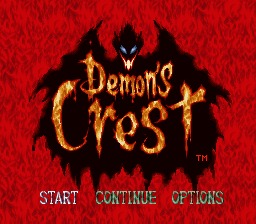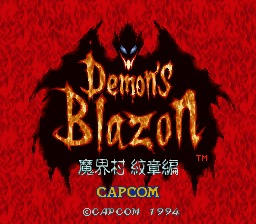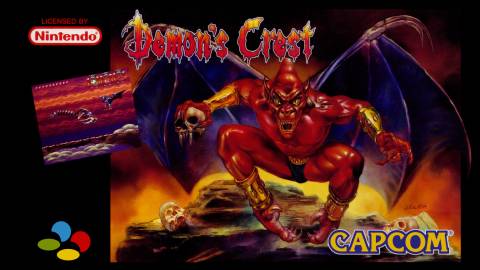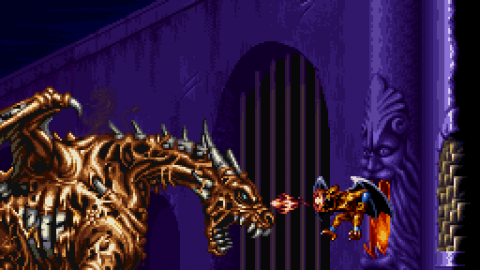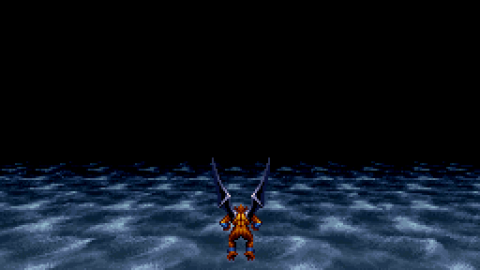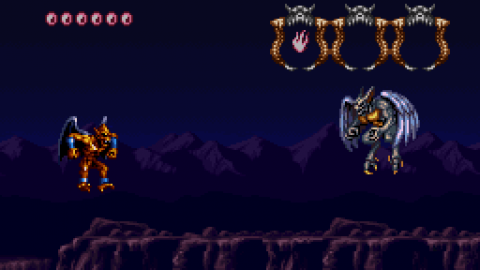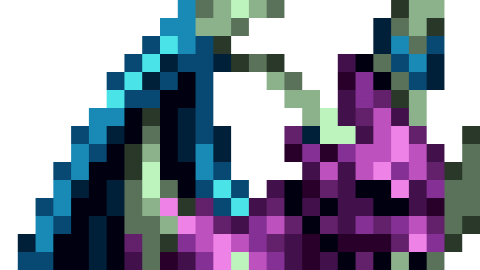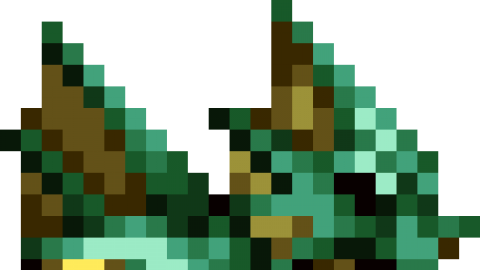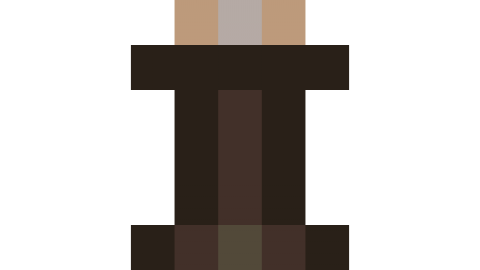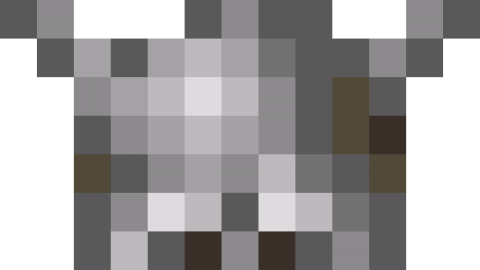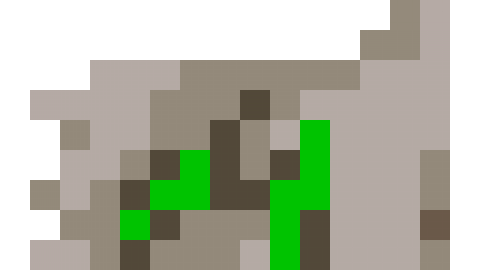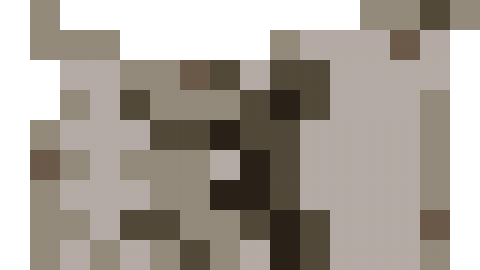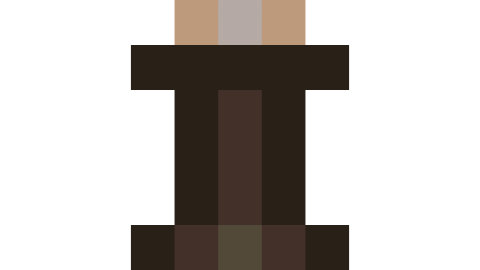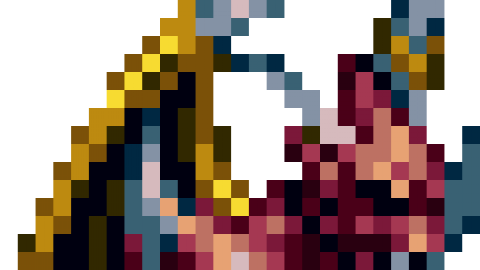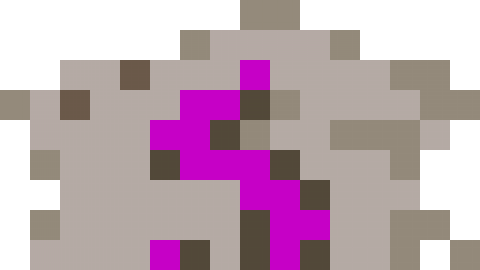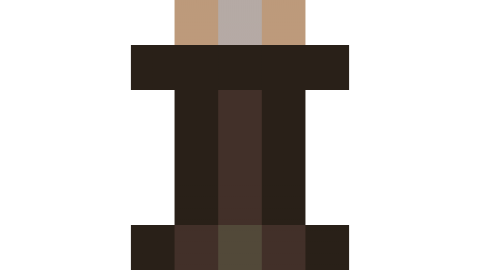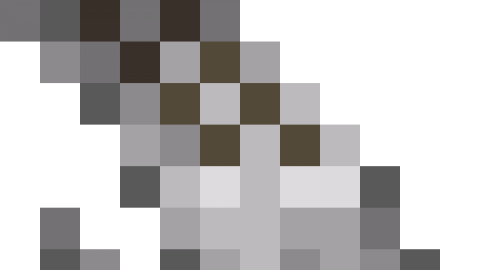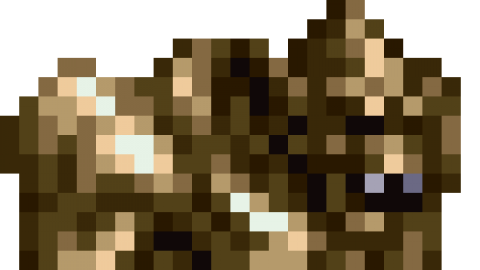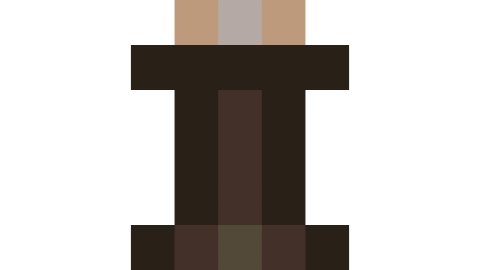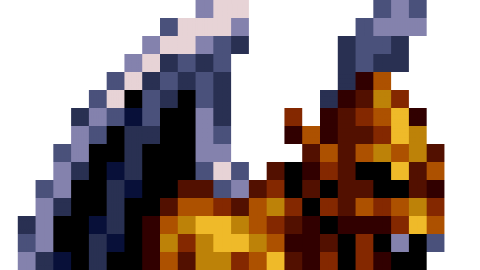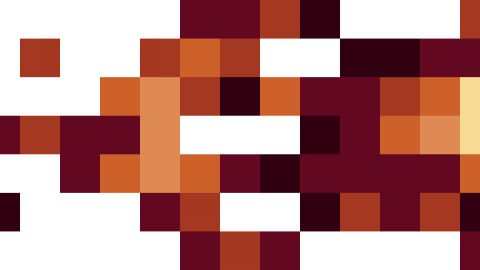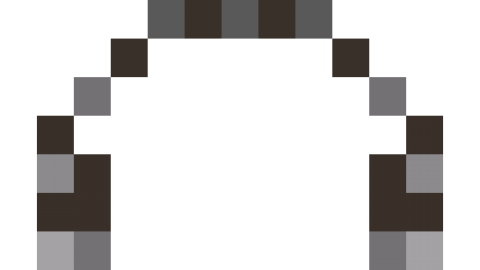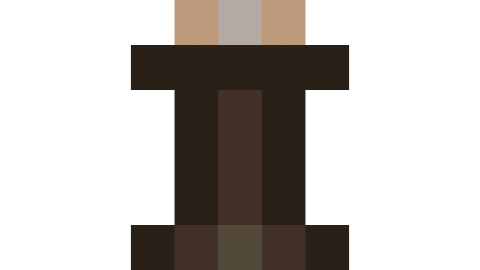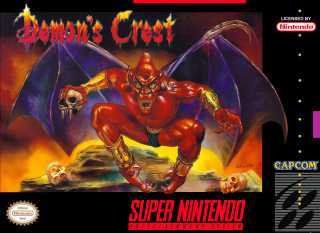Overview
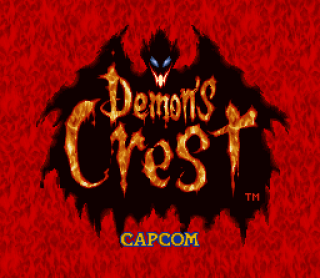
Developed and published by Capcom and released in 1994 for the Super Nintendo Entertainment System, Demon's Crest is the third iteration in the Gargoyle's Quest franchise, an offshoot of the popular Ghosts 'n Goblins series. As was the case with the series' previous titles, Gargoyle's Quest and Gargoyle's Quest II: The Demon Darkness, Demon's Crest is a side-scrolling platform game which places players in the role of the anti-hero Firebrand, a member of the very same Red Arremer demon clan often found antagonizing the valiant Arthur in the Ghost 'n Goblin franchise. Its gameplay utilizes mechanics commonly seen in Metroidvania action-adventure games, such as areas which are inaccessible until later upgrades are obtained, and furthermore it shares similarities with Capcom's own Mega Man series, as evidenced by its level selection mechanics and bosses, which often become much easier to defeat with certain weapons. In addition, the game features a rudimentary economy that allows Firebrand to purchase spells and potions with currency found within destructible environmental items or after defeating opponents. In a similar fashion to the Metroid series, Demon's Crest features multiple endings which unfurl differently depending upon the player's item collection percentage at the time they choose to access the game's final battle against Phalanx, which opens up fairly early on.
Plot
In a time long past, the world was divided into two realms, with one realm ruled by man, and the other the dominion of demons. For many years the two kingdoms were peaceful, until one fateful day six powerful crests fell from the sky into the demons' lands. The demons began to fight amongst themselves over the control of these mysterious artifacts, as it was rumored their combined magics were sufficient to make those who possessed them powerful beyond measure. Eventually, a single red demon by the name of Firebrand proved to be more cunning and vicious than his brethren, securing the Crests of Fire, Earth, Air, Water, and Time for himself. Not content to have only five of the six crests, however, Firebrand challenged the demon dragon Somulo for possession of the final crest, the Crest of Heaven. The ensuing battle tested both combatants to their limits, but ultimately the demon dragon succumbed, and Firebrand emerged as the undisputed master of the crests.
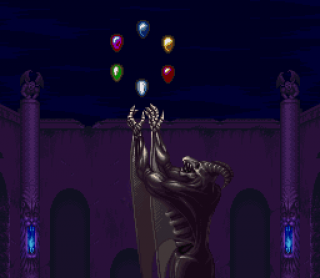
Firebrand's control over the six crests was brief, however. Taking to the skies following his battle with Somulo, Firebrand finds himself attacked unexpectedly by another of his kind, the scheming Phalanx, who took advantage of his weakened state in order to pry the crests from him. Though his exact motives are unclear, Phalanx harbors ambitions of ruling over both the human and demon realms, and he knows that the crests will give him the power to do so. Phalanx successfully wrests all six crests from his wounded opponent, though a single shard of the Crest of Fire, which splintered into five pieces during the fight, still remains in Firebrand's possession at the end of their confrontation.
Defeated but still alive, Firebrand swears to take revenge against the opportunistic Phalanx and reacquire the crests. His vengeance will not be easy, though. Wary that some jealous demon would come to take the crests from him in the same manner that he took them from Firebrand, Phalanx separates the crests and spreads them arcross the demon realm, keeping only the Crest of Heaven on his person. Before he can properly challenge Phalanx for the Crest of Heaven, Firebrand must first search the land for the four hidden crests while also recovering the shattered remnants of the Crest of Fire. Time is of the essence. Phalanx intends to use the six crests to create the Crest of Infinity, which would make him unstoppable. Only the small sliver of the Crest of Fire which remains in Firebrand's possession prevents him from doing so.
Gameplay
The main action of Demon's Crest takes place on traditional side-scrolling levels, many of which contain archetypal stage themes (fire level, water level, ice level, etc.), in which players must travel from left to right, defeating or avoiding enemies, navigating environmental hazards like spikes and flames, and occasionally squaring off against bosses. While the game's introductory stage is predetermined, after its completion players are allowed to choose their next location by flying Firebrand there via an overworld, which essentially acts as a level selection interface. Important locations (that is, those that are tied to the player's main quest) are marked on the map in order to indicate their significance, while a number of other secondary shops and hidden locales can be access through exploration. While accessible stages can be played in any order, their difficulty, and thus their intended order of completion, is signified by a numeric indicator on the game's world map. Progress is furthermore gated by levels which will only unlock once certain conditions have been met within the currently available levels.

The main reward of level completion comes in the form of upgrades to the player character, Firebrand. Bosses typically yield boons such as crests, new abilities, or health upgrades upon defeat, and the levels themselves often hide additional items such as talismans, which provide passive benefits, as well as urns and vellum, which can be used for potions and spellcasting respectively. Many levels include branching pathways which encourage additional playthroughs, and it is often necessary to revisit earlier levels with abilities acquired later on, as completion of certain side paths may be extremely difficult or entirely impossible without a particular item. Once a player has completed a certain amount of the game, the Tower of Phalanx is unlocked. From that point forward, the player is free to engage the game's final battle when they see fit. Players who resist the urge to challenge Phalanx immediately are rewarded with better endings and the possibility of additional post-ending content based on their completion percentage upon finishing the final battle.
When not tackling the game's main stages, the player can access several non-combat areas via the overworld. These mostly consist of shops which allow players to purchase one-time use potions and spells for Firebrand with currency gathered throughout the game. Additional urns and vellum increase the maximum number of potions and spells that can be stored at one time, though ultimately gold is also required in order to purchase them. Outside of purchasing items, activities in these neutral areas is somewhat limited. A few non-player characters can be engaged with, and an additional headbutting mini-game can be played for fun and profit. It is in the player's best interest to use what currency they find, as the game's password system does not carry over money or consumable items when continuing a game.
Fire Crest Projectiles

Broken into five pieces at the game's outset, the Crest of Fire is tied intrinsically to Firebrand's default form, the Normal Gargoyle. The player starts with only one fragment of the crest in their possession at the game's commencement, and unlike other crests, each additional piece of the Crest of Fire must be gathered individually before the crest can be considered whole. The basic abilities of his normal form include the use of his wings to hover after jumping, utilization of his talons to indefinitely cling to non-spiked wall surfaces, and headbutting, which breaks certain background items. These traits do not change with the acquisition of additional fire shards, nor does Firebrand's appearance, but new shards grant Firebrand access to additional projectiles while in his default state, each with their own properties. Only one of the available projectile types can be in active use at any given time, and furthermore these cannot be used concurrently with other crests, though players can cycle between the different projectile types at will through the game's menu.
Crests of Power

With the exception of the Fire shards, which change only his base projectile, each of the crests obtained by Firebrand over the course of his journey yields several tangible changes when used. Once an individual crest is found, Firebrand may use it at any later point to transform into a version of himself which is imbued with the powers of that particular crest. He may then stay in any of these forms indefinitely, though it is often prudent to switch between crests frequently depending on the situation. Additional forms grant abilities that Firebrand's default form does not have access to, and in fact many areas of the game are designed such that certain crests will be better suited than others.
As powerful as they are, It is worth noting that switching to new forms may cause the player to lose abilities that are available to them in the default form. For instance, certain transformations are wingless, and therefor have no ability to hover, while several forms also lack Firebrand's basic headbutt ability, which is accessible to him from the start of the game. This means that it can sometimes be wise to fall back on Firebrand's basic gargoyle form, which has a more well-rounded set of abilities. This is especially true of forms which are more specialized in nature, such as the Tidal Gargoyle.
Spells
The spell system on Demon's Crest is in place to allow players the means to create and cast various spells to augment their usual offensive abilities. Before a spell can be cast, Firebrand is first required to obtain vellum, which is essentially a blank scrap of parchment which a spell can be inscribed upon. Once a player possesses vellum, spells can be inscribed upon them by special vendors within the game world, provided the player has enough money for the particular spell. Once the spell has been used, the vellum returns to a blank state, and must be inscribed with a spell once again before it can be reused. The player can have up to five spells of their choosing at one time.
Potions
The more defensive counterpart of the spell system, Demon's Crest's potion system operates in exactly the same fashion. Players are required before making a potion to collect at least a single urn, which acts as the vessel for a potion. With sufficient funds, players can then purchase potions from designated potion vendors in the game world in order to fill these urns. Each potion can be used only once before needing to be repurchased, and as with spells, a player can possess a maximum of five different potions at one time, depending on the number of urns they have collected. Only one potion or spell may be equipped at a given moment, and, once used, the player must manually equip a new one from their inventory in order to use it.
Talismans
The artifacts known as talismans are quite different from other Demon's Crest collectibles in that they are entirely passive. Talismans can be equipped from the inventory page much like potions or spells, but once done, they provide a constant benefit to the player which does not diminish over time. Each talisman must be found in the game world rather than bought, and though the unique properties of each are not immediately explained in-game, a certain helpful NPC will offer to explain the benefits of whichever talisman the player happens to have equipped.
Mode 7
Demon's Crest was another game which utilised the Mode 7 graphical mode of the Super Nintendo primarily for its world map.

 Super Nintendo Entertainment System
Super Nintendo Entertainment System Wii U
Wii U New Nintendo 3DS
New Nintendo 3DS
























